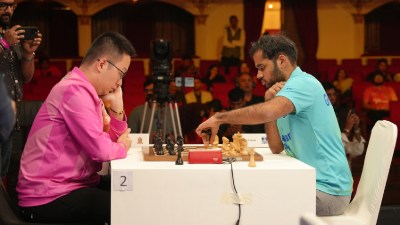For Hindus in Mauritius, Ram temple connects them to their identity
One and a half years later, the Indian diaspora will be commemorating the consecration of the Ram temple on January 22. But perhaps non-resident Indians in a few countries will be celebrating the grand event in a form similar to that being witnessed in Mauritius.
 Car rallies held in Mauritius in the run-up to the consecration of the Ram Mandir in Ayodhya. (Photo credit: Screengrab/Yanish Mohall)
Car rallies held in Mauritius in the run-up to the consecration of the Ram Mandir in Ayodhya. (Photo credit: Screengrab/Yanish Mohall)In August 2020, when Prime Minister Narendra Modi laid the foundation stone of the Ram Temple in Ayodhya, approximately 6,000 km away in the island nation of Mauritius, an 89-year-old man sat on his couch, tears streaming down his face, as he watched the ceremony being telecast live from India. “My father has had a stroke and he was sitting and crying all the way. It meant that the wait was finally over,” says Nivedita R Nathoo, the vice president of the Mauritius branch of a group called the Overseas Friends of Bharatiya Janata Party, a group affiliated with the party.
One and a half years later, the Indian diaspora will be commemorating the consecration of the Ram temple on January 22. But perhaps non-resident Indians in a few countries will be celebrating the grand event in a form similar to that being witnessed in Mauritius.
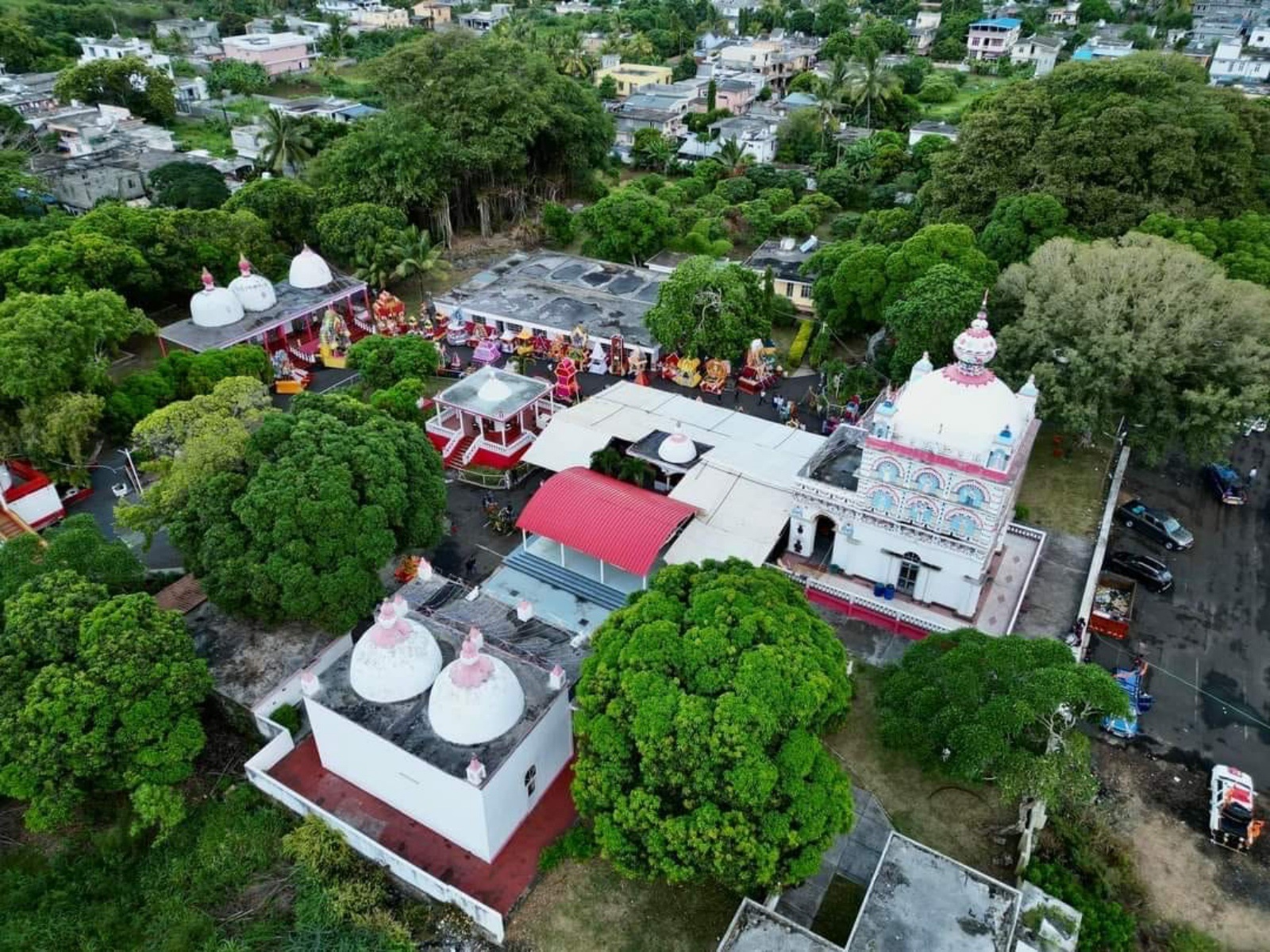 An aerial view of the Maheswarnath Mandir, a Hindu temple located in the town of Triolet, Mauritius. The presiding deity of the temple is Lord Shiva. The temple was founded in 1888 by Pandit Shri Sajeebunlall Ramsoondur, who came from Calcutta. It is among Mauritius’ oldest temples. (Photo credit: Prof. Mohurlall Chummun)
An aerial view of the Maheswarnath Mandir, a Hindu temple located in the town of Triolet, Mauritius. The presiding deity of the temple is Lord Shiva. The temple was founded in 1888 by Pandit Shri Sajeebunlall Ramsoondur, who came from Calcutta. It is among Mauritius’ oldest temples. (Photo credit: Prof. Mohurlall Chummun)
The Mauritius government has approved a request by several Hindu socio-cultural and socio-religious organisations to grant a two-hour break on January 22 to allow devotees to participate in prayers and ritualistic ceremonies that are being held in temples across the country, in addition to the various cultural and religious programmes. The Hindu Council of Mauritius has organised a cultural programme to mark the consecration in Vacoas-Phoenix town, where Prime Minister Pravind Kumar Jugnauth will be the chief guest.
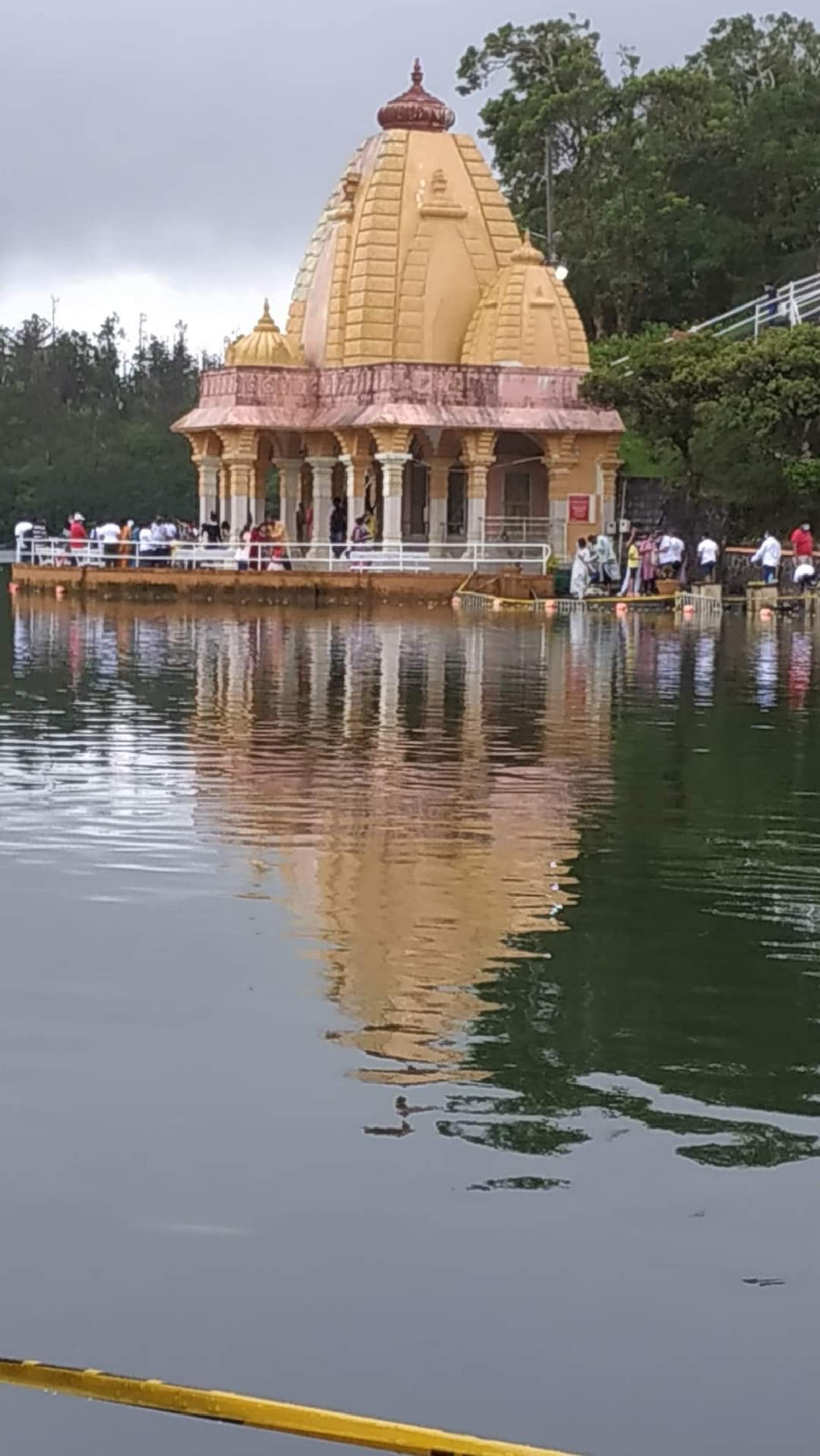 The Ganga Talao, a large crater lake in Mauritius that is considered by the Hindu community to be holy and symbolises a connection with the holy Ganga river in India. (Photo credit: Prof. Mohurlall Chummun)
The Ganga Talao, a large crater lake in Mauritius that is considered by the Hindu community to be holy and symbolises a connection with the holy Ganga river in India. (Photo credit: Prof. Mohurlall Chummun)
Large display screens have also been set up inside the premises of temples, as well as in the centre of towns and cities by the municipality administration where the consecration will broadcast live from Ayodhya.
Let us rejoice as Shri Ram returns to Ayodhya. May his blessings and teachings continue to light our way towards peace and prosperity. Jai Hind! Jai Mauritius!#ShriRamBhajan
— Pravind Kumar Jugnauth (@KumarJugnauth) January 21, 2024
“The Arya Samaj headquarters has given us orders to decorate all Arya Samaj temples in the country. We will hold a yajna (sacred fire) in each temple and we will also recite the Valmiki Ramayan. We will also hold lectures on Lord Ram’s life and values and we will light oil lamps in Arya temples to welcome the deity on January 23,” says Dr Vedbhushan Chummun, vice president of the Arya Sabha of Mauritius, a religious organisation associated with the Arya Samaj.
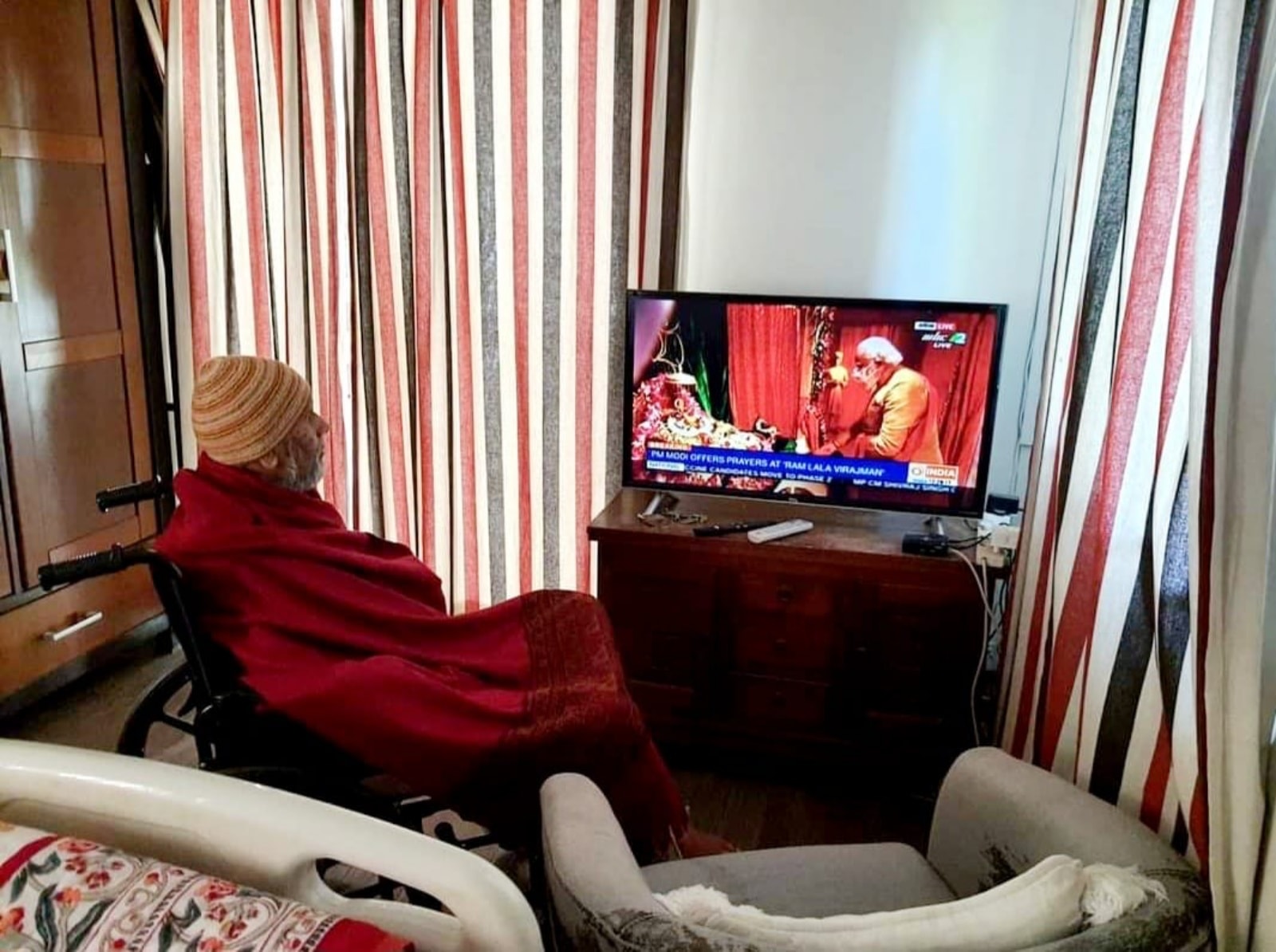 In August 2020, when Prime Minister Narendra Modi laid the foundation stone of the Ram Temple in Ayodhya, an emotional 89-year-old Pandit Rajgoorooh Ramsarah, watched the television news broadcast. (Photo credit: Nivedita R. Nathoo)
In August 2020, when Prime Minister Narendra Modi laid the foundation stone of the Ram Temple in Ayodhya, an emotional 89-year-old Pandit Rajgoorooh Ramsarah, watched the television news broadcast. (Photo credit: Nivedita R. Nathoo)
India-Mauritius ties
This support for the Ram Mandir in Mauritius should not come as a surprise, says Ajay Kumar Dubey, professor, School of International Studies at JNU. More than 68 per cent of the island nation’s population are people of Indian origin. “The first prime minister of India, Jawaharlal Nehru, adopted a policy of active disassociation with the Indian diaspora, saying they were foreign nationals and were of little concern to the Indian government. But he made an exception for Mauritius,” says Prof. Dubey.
There have been several socio-cultural reasons behind this. “The diaspora had retained its language, culture, and religion, far more effectively than any other Indian diasporic group because there was no indigenous population,” he says. Mauritius was uninhabited till the 10th century and human settlements developed there only after colonial conquests by Western powers over the subsequent years.
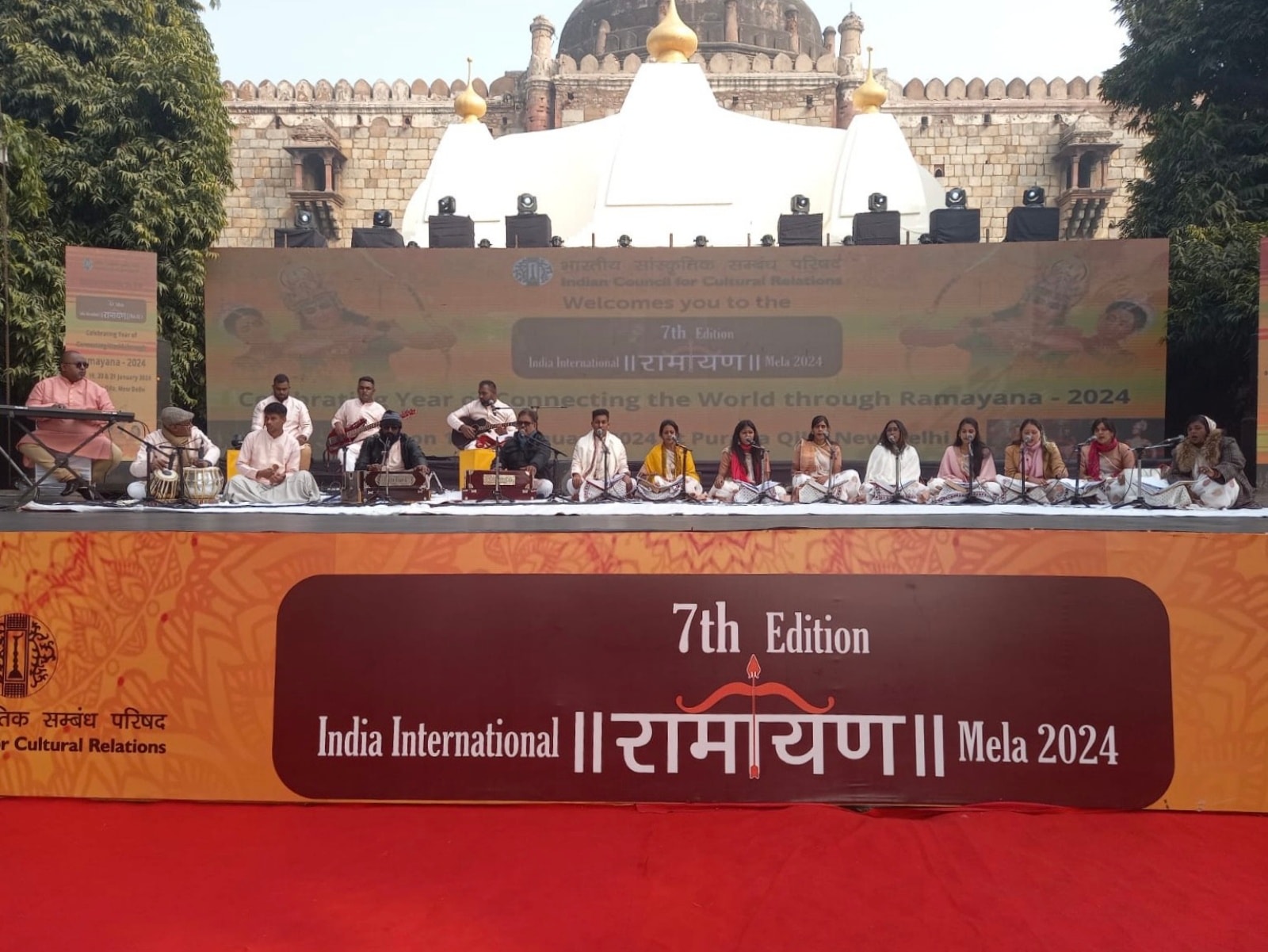 A group of 20 musicians from Mauritius performing the Chowtal in New Delhi. Later in the week, they will also be performing in Ayodhya for the consecration. (Photo credit: Vikash Anghnoo)
A group of 20 musicians from Mauritius performing the Chowtal in New Delhi. Later in the week, they will also be performing in Ayodhya for the consecration. (Photo credit: Vikash Anghnoo)
“Mauritius has also almost always had an Indian-led government since its independence in 1968. There are a lot of strong bilateral relations between India and Mauritius in many fields and very good people-to-people relations. So much so that in 1962, during the Indo-China war, the Indians in Mauritius dragged the Chinese out of their homes and beat them when India suffered losses,” he adds.
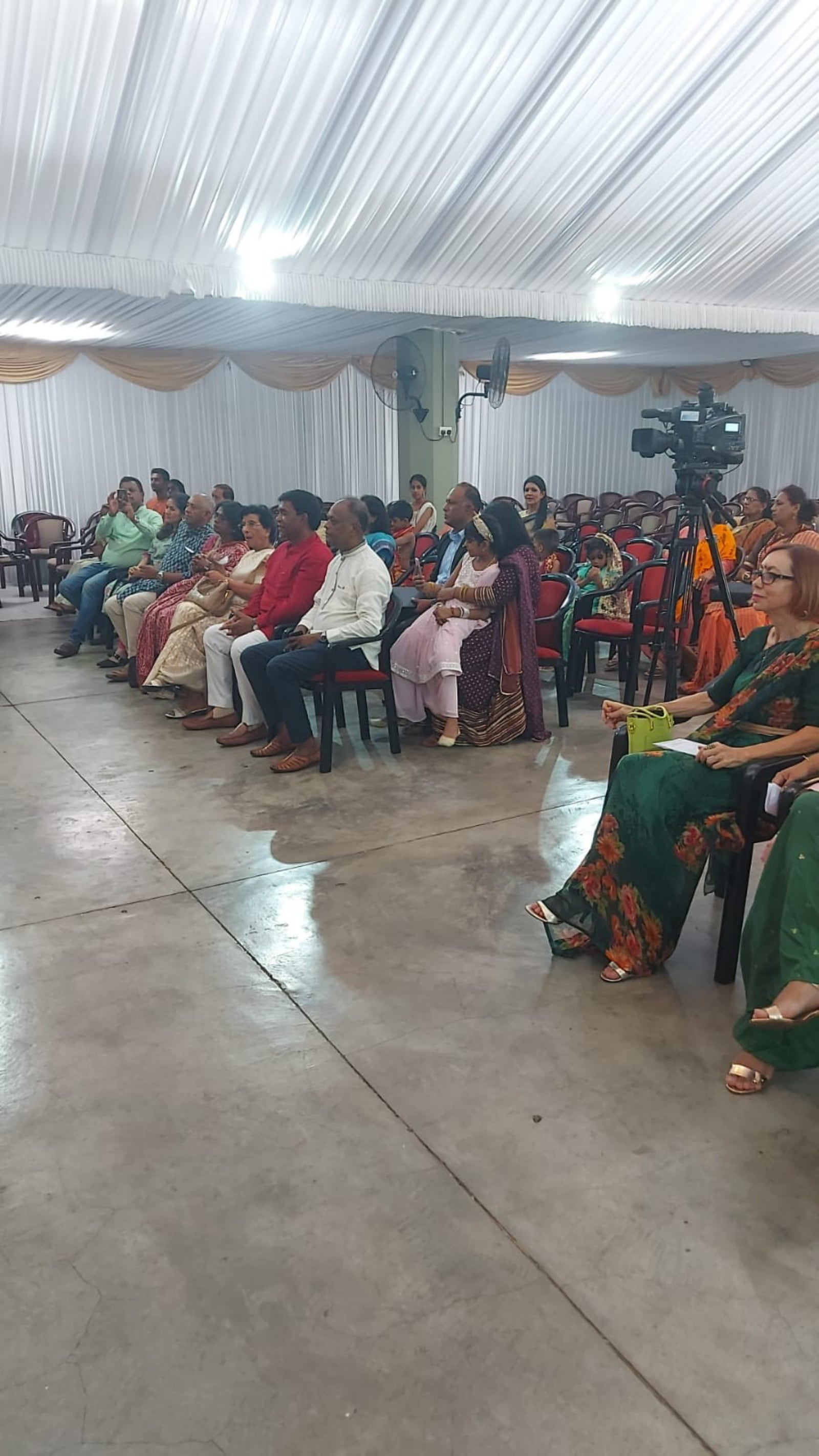 Mauritius President Prithvirajsing Roopun (in red kurta), attending a cultural programme organised by the Mauritius Sanatan Dharma Temples Federation, to mark the consecration of the Ram Mandir in Ayodhya. (Photo credit: Prof. Mohurlall Chummun)
Mauritius President Prithvirajsing Roopun (in red kurta), attending a cultural programme organised by the Mauritius Sanatan Dharma Temples Federation, to mark the consecration of the Ram Mandir in Ayodhya. (Photo credit: Prof. Mohurlall Chummun)
On the diplomatic front, Mauritius has never opposed India in any multilateral forum like the UN as well. The cultural connection between the two countries is visible in the fact that two major global institutions — the World Hindi Secretariat and the World Bhojpuri Secretariat — are based there. In 1999, the governments of India and Mauritius jointly set up these two international organisations to connect citizens of countries where Hindi and Bhojpuri were the first or customary languages, and where a significant percentage of the population consists of speakers of these languages and have an affiliation with Indian culture due to their origins. Therefore, when the Ram Janmabhoomi movement started in India, its impact was witnessed in Mauritius as well, says Prof. Dubey.
According to the 2011 census in Mauritius, approximately 48 percent of the population is Hindu. According to the Central Statics Office of the Mauritius government, Hinduism is the most practised faith in the country.
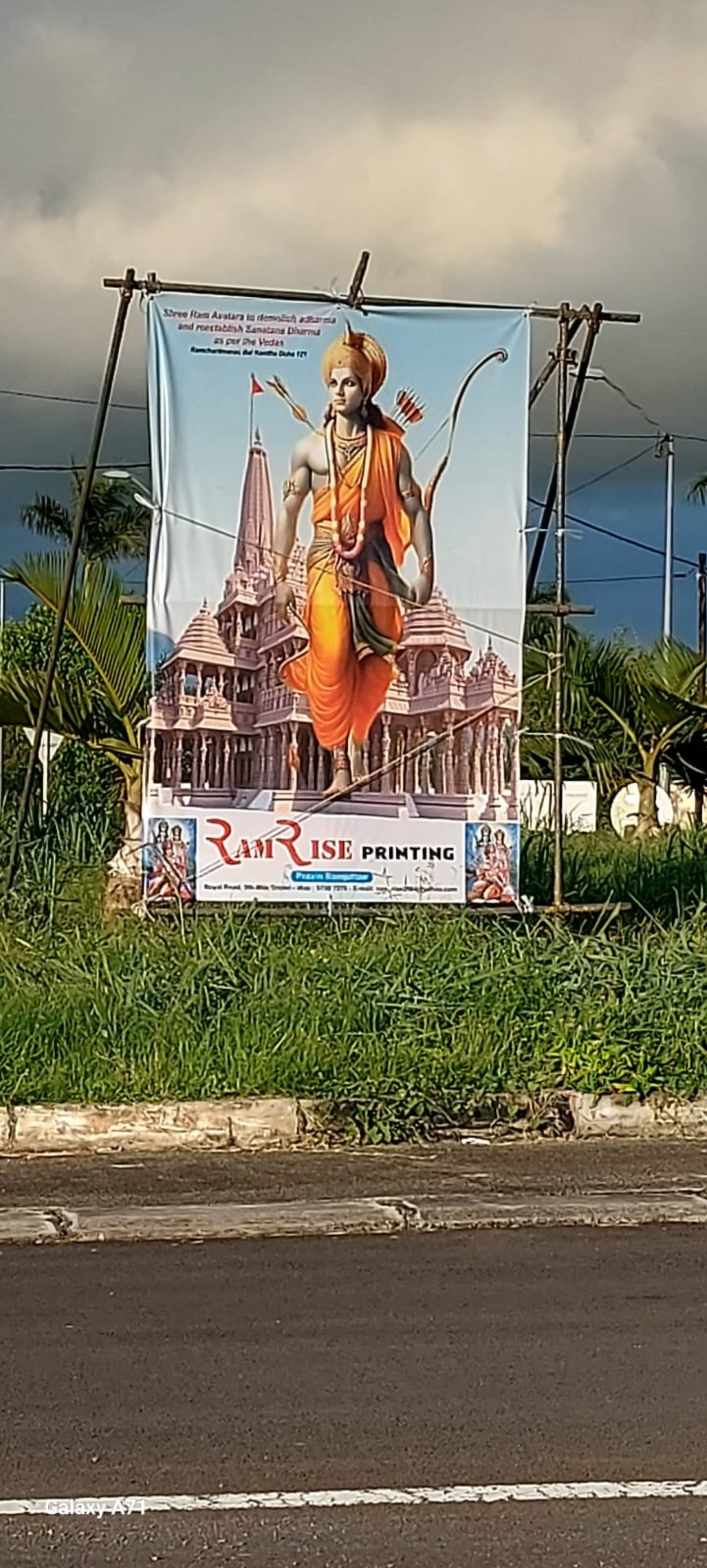 A large poster of Lord Ram in Mauritius. (Photo credit: Prof. Mohurlall Chummun)
A large poster of Lord Ram in Mauritius. (Photo credit: Prof. Mohurlall Chummun)
Indian immigrants in Mauritius
The migration of indentured labour to Mauritius is a lesser-known part of the history of global slavery and that of Indian migration. But it is also a story about how the Ramayana and the worship of Ram as a deity travelled across the seas.
Between 1830 and 1860, the British, French, and Portuguese, during the colonisation of the Indian subcontinent, prohibited slavery that was implemented by several acts under their domains. But slavery was only replaced with another form of bonded servitude, euphemistically termed ‘indentured labour’ or ‘Girmitiya’, where poor farmers were duped and exploited and sent to work in sugar and rubber plantations owned by colonial powers in the Caribbean, Fiji, Réunion, Natal, Mauritius, Malaysia, Sri Lanka, etc, where descendants of indentured labourers continue to live. In Mauritius, the first ship of indentured labourers arrived in 1834 at Aapravasi Ghat. Between 1834-1920, approximately half a million people arrived in Mauritius at this port to work as indentured labourers according to figures by UNESCO.
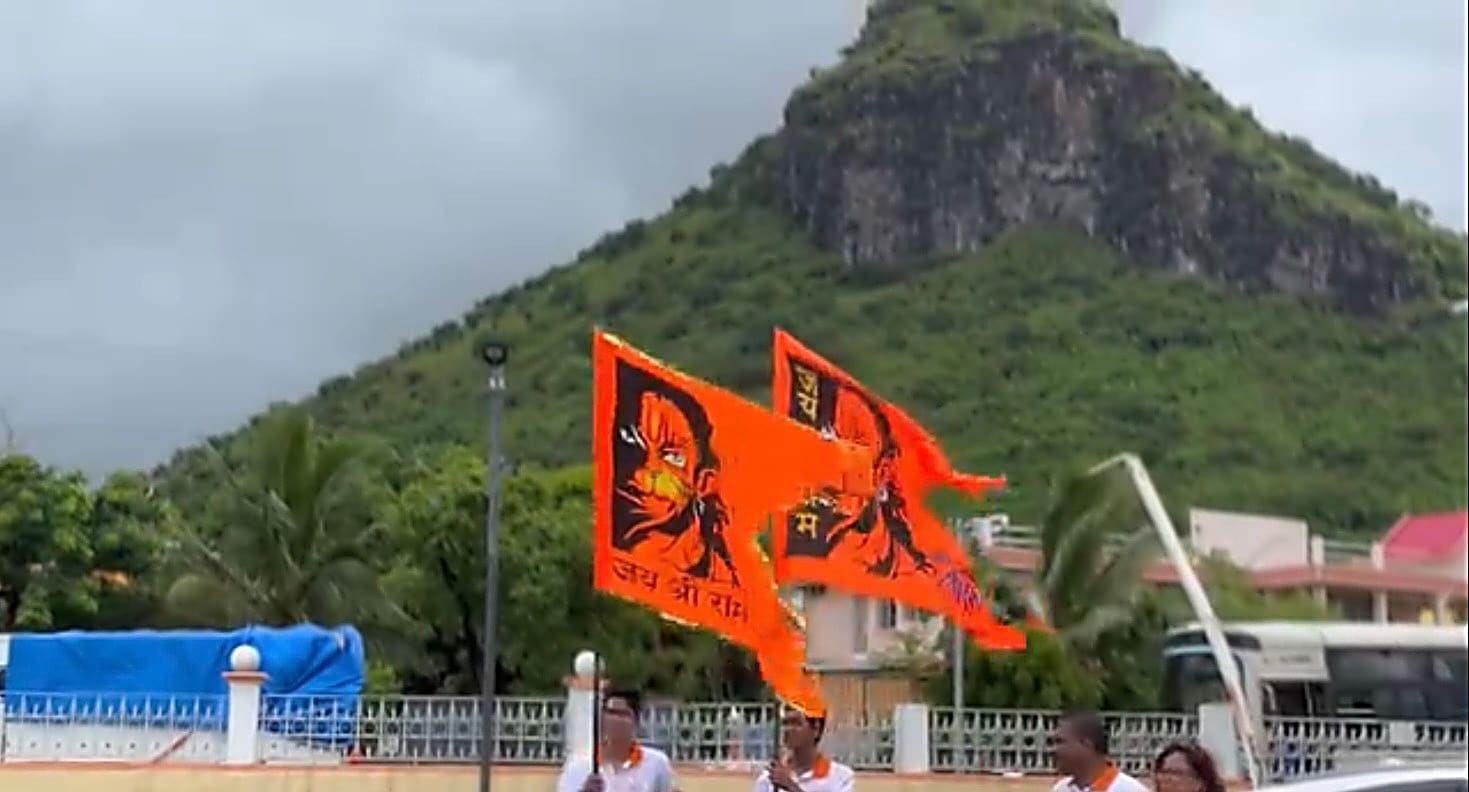 Car rallies held in Mauritius in the run-up to the consecration of the Ram Mandir in Ayodhya. (Photo credit: Screengrab/Yanish Mohall)
Car rallies held in Mauritius in the run-up to the consecration of the Ram Mandir in Ayodhya. (Photo credit: Screengrab/Yanish Mohall)
“When our ancestors started coming to Mauritius in 1834, they faced so many difficulties because of physical work in the sugar field. When they came here, they only had the Ramayana in their bags of personal belongings which they brought to Mauritius. I am the fifth generation of indentured labourers and I am proud of them. Because of them, my children and I know a lot about Ram and we worship him,” says Kritilata Ram, president of GOPIO Triolet, an international non-governmental organisation founded in 1989, that works to connect and support people of Indian origin around the world in remaining connected with the heritage and culture of their place of origin- India or the Indian subcontinent before 1947.
Since most indentured labourers came from the United Provinces — modern-day Uttar Pradesh and Bihar — where the worship of Ram and the Ramayana and other associated texts were important, they took these religious beliefs and practices with them when they settled in the plantations.
“Our ancestors had difficult lives. The only moment of respite was when they sat together and read the Ramayana in the baithak and we call them baitka,” says Nathoo. “So the Ramayana has supported the Hindu people of Mauritius in their difficult journey. I think that is why we are so connected with Ramayana and India and it was what kept us connected.”
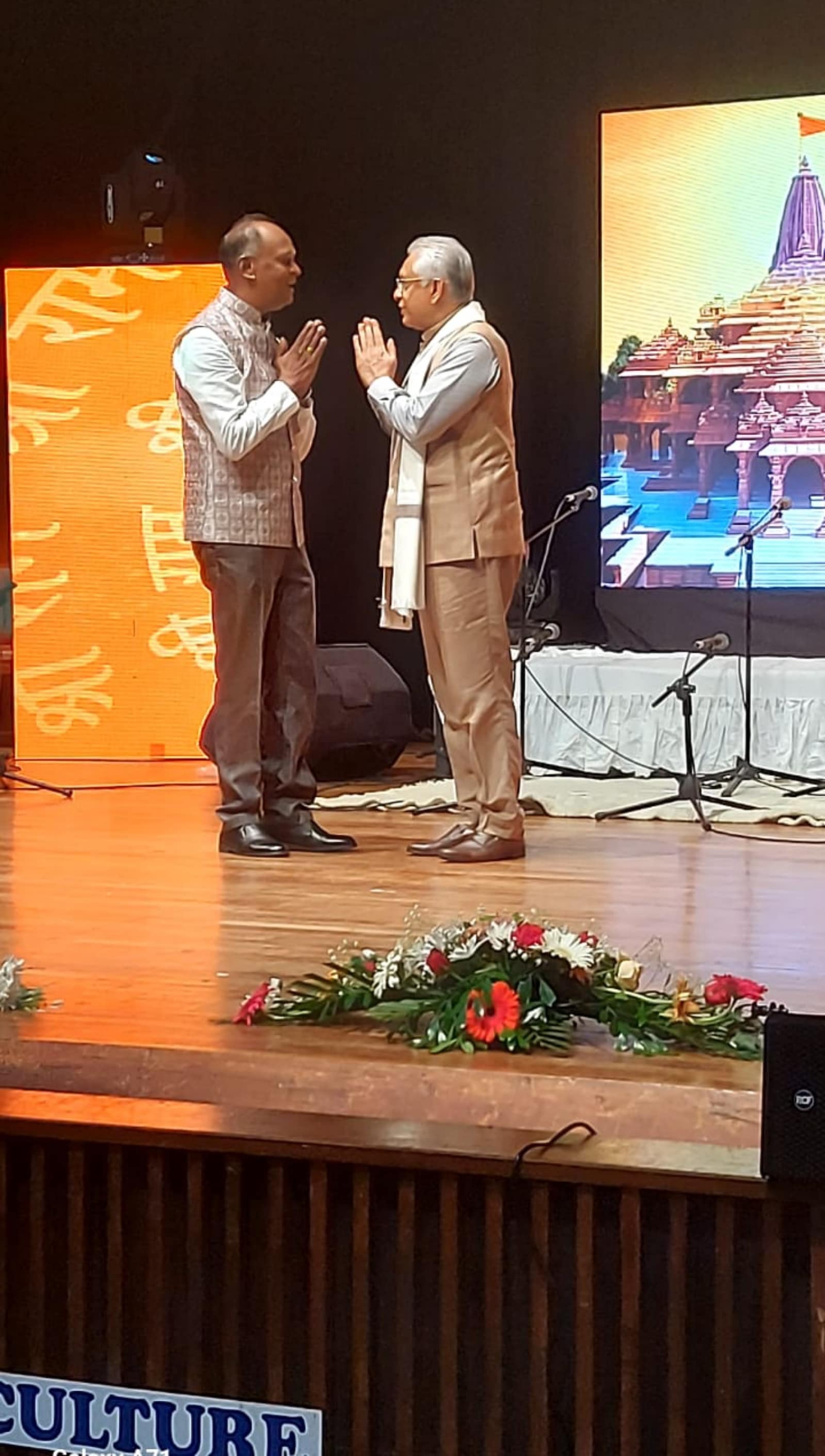 The President of Hindu Council of Mauritius welcoming PM Pravin Kumar Jugnauth. (Photo: Prof Mohurlall Chummun)
The President of Hindu Council of Mauritius welcoming PM Pravin Kumar Jugnauth. (Photo: Prof Mohurlall Chummun)
 The President of Hindu Council of Mauritius welcoming PM Pravin Kumar Jugnauth. (Photo: Prof Mohurlall Chummun)
The President of Hindu Council of Mauritius welcoming PM Pravin Kumar Jugnauth. (Photo: Prof Mohurlall Chummun)
Growing up, Nathoo would hear stories of the Ram Mandir but only understood why people in Mauritius considered it to be important when she grew older. Last year, in March, she travelled to Ayodhya carrying water from the Ganga Talao, a large crater lake in Mauritius that is considered by the Hindu community to be holy and symbolises a connection with the holy Ganga river in India.
This week, groups of people will also perform the Chowtal inside temples. “Usually Chowtal is performed only during Holi and Diwali, but this week, there will be special performances for the Ram Mandir,” says Professor Mohurlall Chummun, a lecturer of music at the Mahatma Gandhi Institute in Mauritius. Chowtal is a form of folk music from the Bhojpur region and was one of the music styles that indentured labourers took with them when they settled in colonial plantations far away from their homeland.
“During Holi and Diwali, we have Chowtal performances, where we will take verses from the Ramcharitmanas or Ramayana. It is prevalent in Bihar even today. People will use a jhaal, which is like the manjira but slightly bigger, and they sit in a circle and sing, accompanied by a dholak,” says Professor Chummun.
While many people of Indian origin in Mauritius have wanted to travel to Ayodhya to watch the consecration in person, only a group of 20 musicians have succeeded. These musicians will be performing the Chowtal in Ayodhya on January 23, as well as in a few other Indian cities, including New Delhi. “We had won a major Ramayana chanting competition in Mauritius where we had to recite one to two chaupai within 12-15 minutes. It is judged based on sur, taal, music, and presentation. We had told our government’s Ministry of Arts and Culture that the winner of the competition in 2022 should be allowed to perform in India,” says Vikash Anghnoo, who is a part of the Roche Bois Vandana Group that has travelled from Mauritius to perform.
“We had been scheduled to come in 2023, but it just so happened that we got a chance to travel only this week, so we are now performing for the consecration events. In Ayodhya, we will perform dohe and chaupai from the Sundarkand and some Ram bhajan. We are devotees of Lord Ram, so I feel that the goal of my life is fulfilled. We do Ram paath every week, so it is a big blessing for us that we can participate in this consecration,” says Anghnoo.
Many citizens have been making plans to visit Ayodhya in the coming weeks, says Prof. Chummum, who is hoping to travel to India next month. The difficulties in securing entry permits and coordinating travel plans amidst such high security have made it difficult for people in Mauritius to travel specifically for January 22, Mauritians say.
“Mauritius means Ram bhakti (faith), Ram gaan (religious song) and Ram paath (prayer). This is a proud moment for us. When the Girmitya came to Mauritius, they brought only the Ramayan with them, so we consider Mauritius to be a country of Ramayan. That is why all religious organisations as well as children and adults, are all waiting for Lord Ram. While flying kites on Makar Sankranti, we wrote Lord Ram’s name on each kite, as well,” says Shivpoojan Lalbeeharry, general secretary of the Mauritius Sanatan Dharma Temples Federation, which oversees 347 temples in the country.
On Tuesday, Nathoo, along with her father, Pandit Rajgoorooh Ramsarah will be watching the consecration being broadcast live in Mauritius.
“If you are away from India, you hang onto your traditions and culture more. I have Indian friends and they don’t know about Indian culture like we do here. In Mauritius, every Hindu child, and every adult knows about and grew up listening to the Ramayana. We know that if we don’t do that, our children will lose their culture. They won’t remember where we come from and who we are. I think that is one of the reasons why this is so important for us,” she says.







